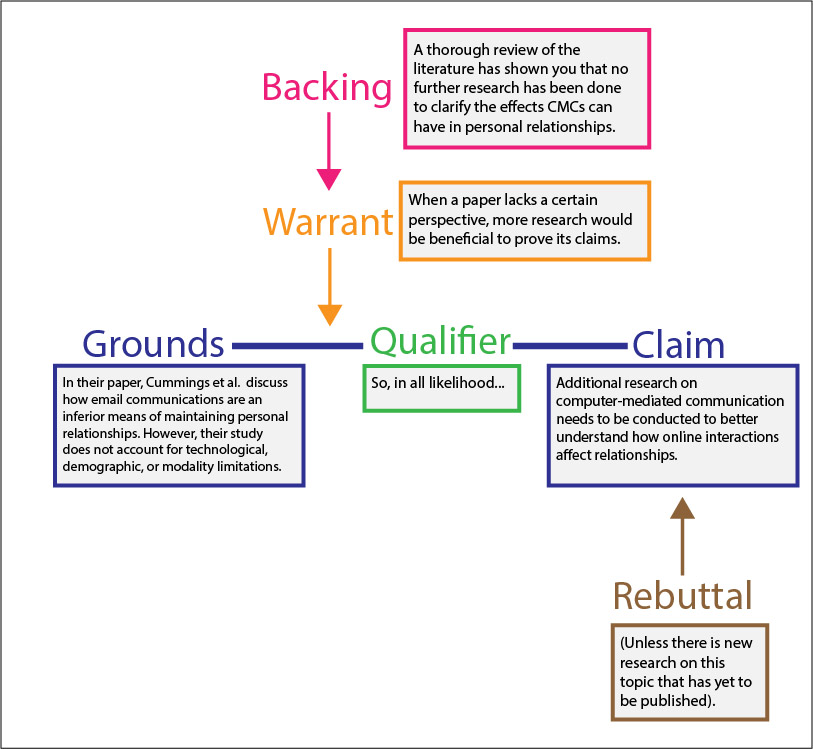The Toulmin Model
What is the Toulmin Model?
The Toulmin Model is a model for organizing the format for preparing arguments. According to our textbook, the Toulmin model, "requires you to analyze the claim, the reasons offered to support the claim, and the evidence offered to support the reasons, along with the warrants that make the reasons and evidence relevant to the claim," (Green 288). The main components of this model are:
Primary:
- Claim: The main point that the arguer wants to the audience to believe in.
- Grounds: The beliefs or basis for the claim, the support.
- Warrant: The reasoning that acts as the inferential leap from the grounds to the claim.
Secondary:
- Backing: The support to provide reliability for the warrant.
- Qualifier: The degree to which the arguer believes in the claim.
- Rebuttal: The exceptions added to the claim in which it might not be valid.
 | |
| Source |
People use this model in various ways while communicating online these days. One of the examples to better understand this model can be found here.
In this example, the Claim is that you should you use a hearing aid. The Grounds for this claim are the facts as mentioned in the example that 70% people over the age of 65 have hearing difficulty. The Warrant in this example can connect the claim and warrant such as hearing aid helps most people to hear better. Backing provides more reliability to the warrant as hearing aids are available locally. Qualifier would strengthen the claim when the arguer says that hearing aids help most people. Rebuttal would limit the ability to raise questions. In this example it would be seen as there is technical support available for assistance.
💭💭💭💭💭
Works cited:
Green, Julia M. Communicating Online. McGraw Hill Education Create, 2017
https://www.geneseo.edu/~bennett/Argument
Comments
Post a Comment